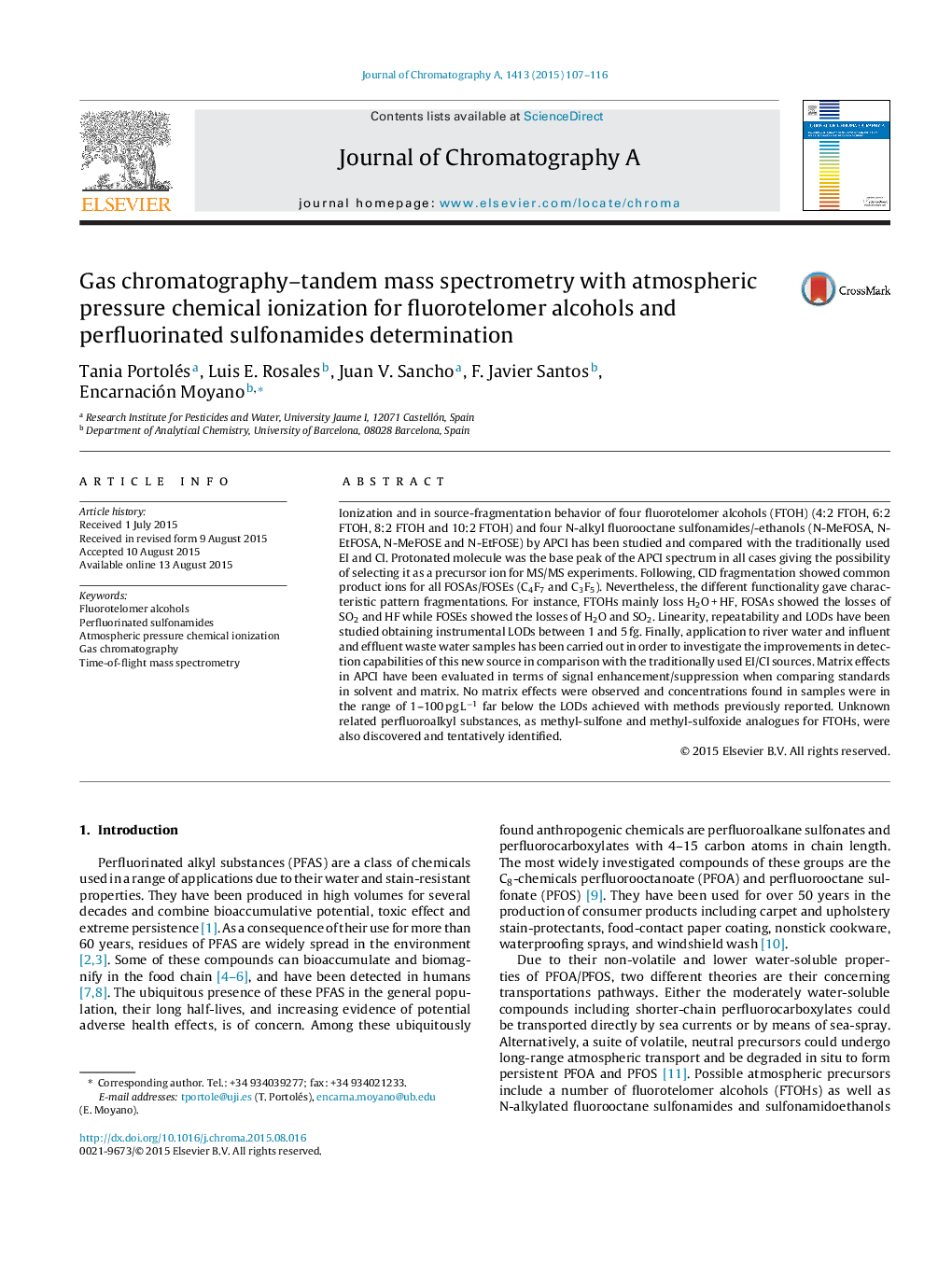| Article ID | Journal | Published Year | Pages | File Type |
|---|---|---|---|---|
| 1201177 | Journal of Chromatography A | 2015 | 10 Pages |
Abstract
Ionization and in source-fragmentation behavior of four fluorotelomer alcohols (FTOH) (4:2 FTOH, 6:2 FTOH, 8:2 FTOH and 10:2 FTOH) and four N-alkyl fluorooctane sulfonamides/-ethanols (N-MeFOSA, N-EtFOSA, N-MeFOSE and N-EtFOSE) by APCI has been studied and compared with the traditionally used EI and CI. Protonated molecule was the base peak of the APCI spectrum in all cases giving the possibility of selecting it as a precursor ion for MS/MS experiments. Following, CID fragmentation showed common product ions for all FOSAs/FOSEs (C4F7 and C3F5). Nevertheless, the different functionality gave characteristic pattern fragmentations. For instance, FTOHs mainly loss H2O + HF, FOSAs showed the losses of SO2 and HF while FOSEs showed the losses of H2O and SO2. Linearity, repeatability and LODs have been studied obtaining instrumental LODs between 1 and 5 fg. Finally, application to river water and influent and effluent waste water samples has been carried out in order to investigate the improvements in detection capabilities of this new source in comparison with the traditionally used EI/CI sources. Matrix effects in APCI have been evaluated in terms of signal enhancement/suppression when comparing standards in solvent and matrix. No matrix effects were observed and concentrations found in samples were in the range of 1-100 pg Lâ1 far below the LODs achieved with methods previously reported. Unknown related perfluoroalkyl substances, as methyl-sulfone and methyl-sulfoxide analogues for FTOHs, were also discovered and tentatively identified.
Keywords
Related Topics
Physical Sciences and Engineering
Chemistry
Analytical Chemistry
Authors
Tania Portolés, Luis E. Rosales, Juan V. Sancho, F. Javier Santos, Encarnación Moyano,
